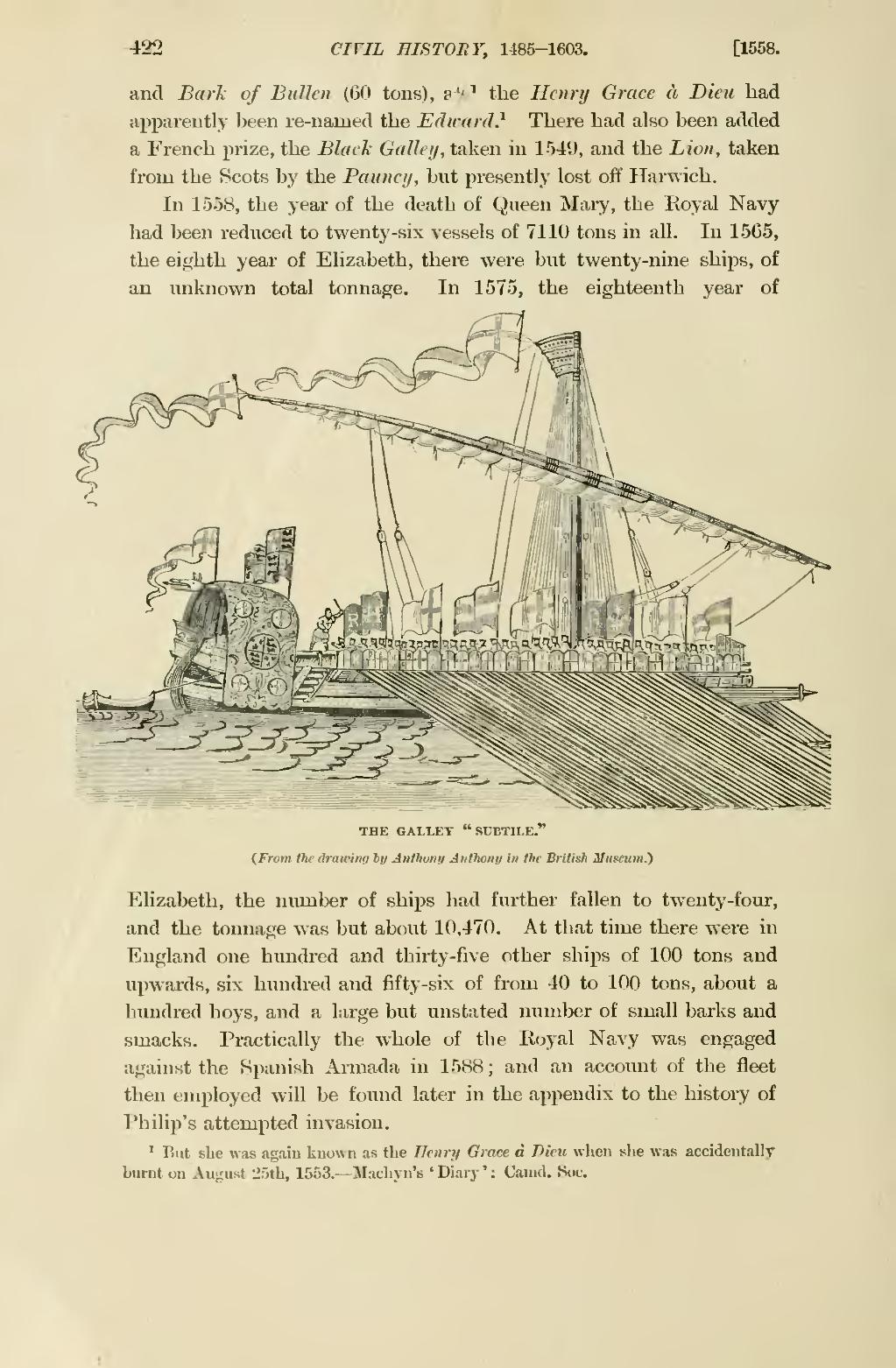and Bark of Bullen (60 tons), and the Henry Grace à Dieu had apparently been re-named the Edward.[1] There had also been added a French prize, the Black Galley, taken in 1549, and the Lion, taken from the Scots by the Pauncy, but presently lost off Harwich.

THE GALLEY "SUBTILE."
(From the drawing by Anthony Anthony in the British Museum.)
In 1558, the year of the death of Queen Mary, the Royal Navy had been reduced to twenty-six vessels of 7110 tons in all. In 1565, the eighth year of Elizabeth, there were but twenty-nine ships, of an unknown total tonnage. In 1575, the eighteenth year of Elizabeth, the number of ships had further fallen to twenty-four, and the tonnage was but about 10,470. At that time there were in England one hundred and thirty-five other ships of 100 tons and upwards, six hundred and fifty-six of from 40 to 100 tons, about a hundred hoys, and a large but unstated number of small barks and smacks. Practically the whole of the Royal Navy was engaged against the Spanish Armada in 1588; and an account of the fleet then employed will be found later in the appendix to the history of Philip's attempted invasion.
- ↑ But she was again known as the Henry Grace à Dieu when she was accidentally burnt on August 25th, 1553.—Machyn's 'Diary': Camd. Soc.
